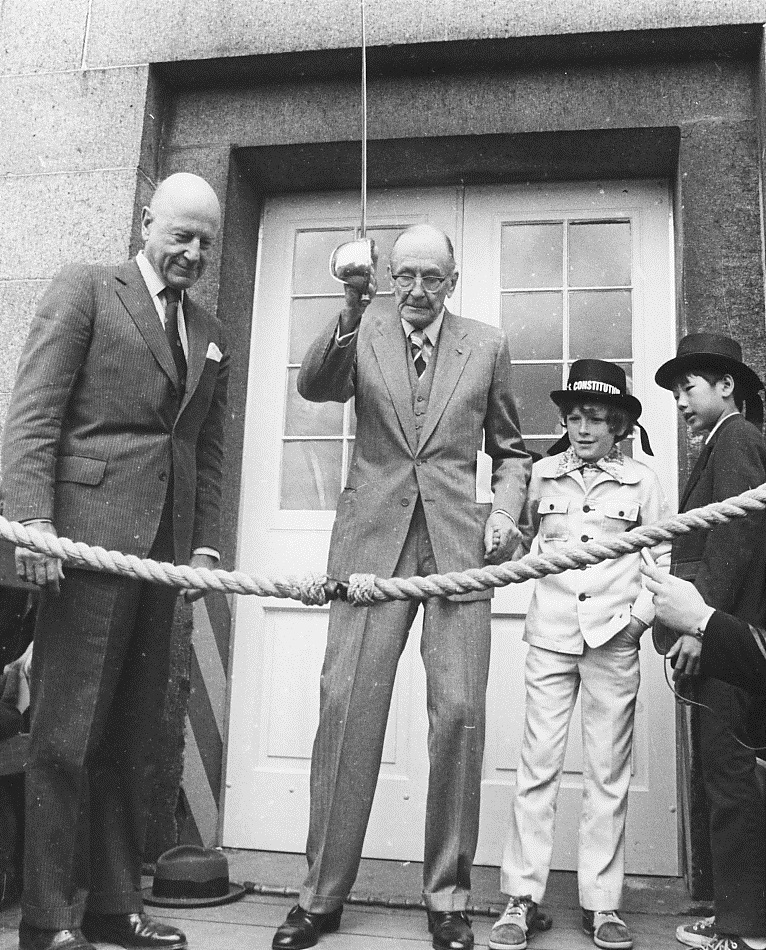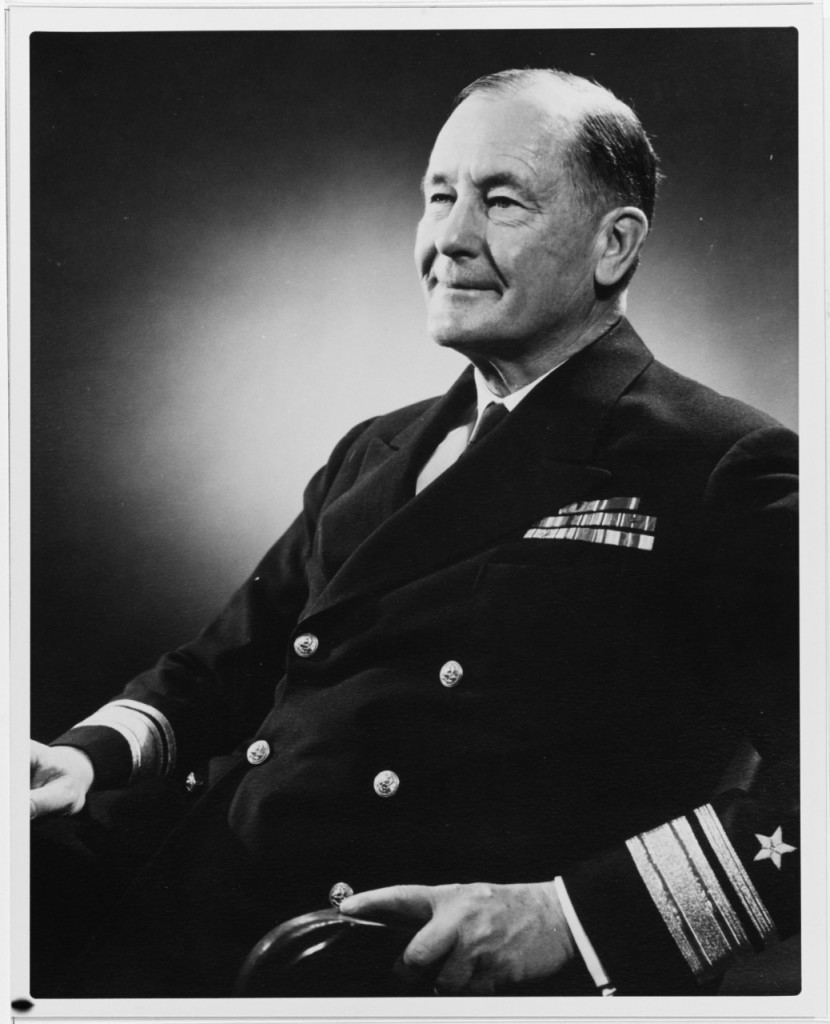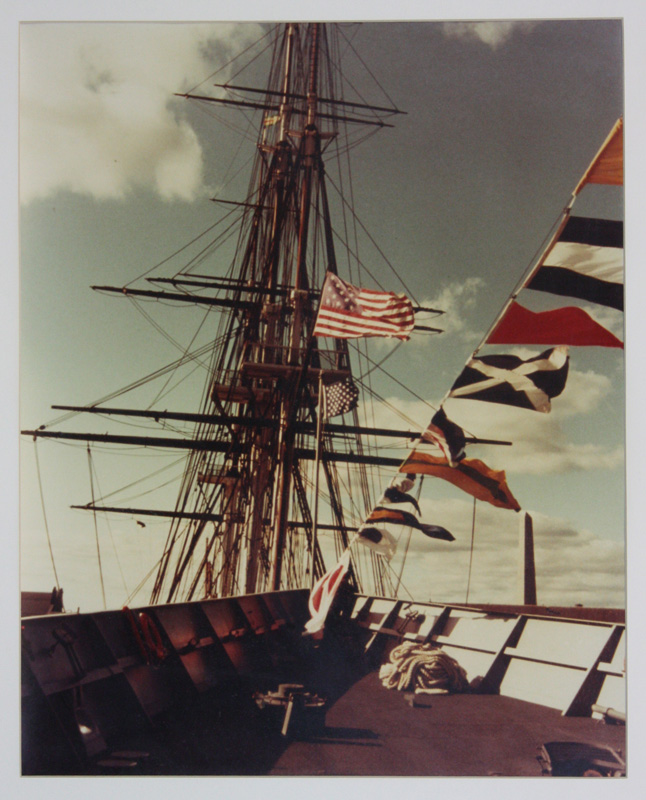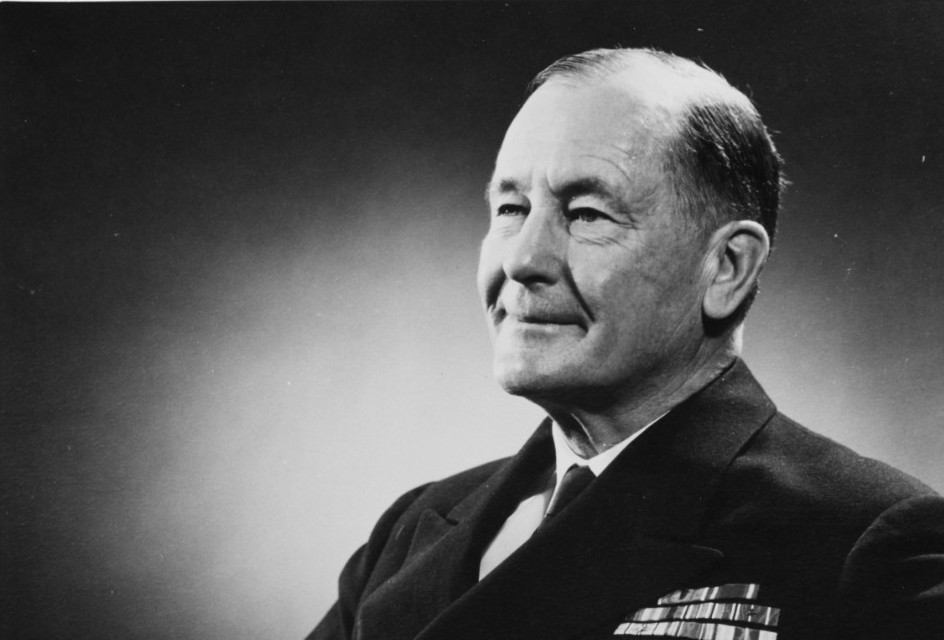On April 8, 1976 Pulitzer Prize winning historian Admiral Samuel Eliot Morison cut the ribbon that marked the official opening of the USS Constitution Museum in Building 22 at Charlestown Navy Yard. Morison’s connection to the yard and the Navy went back to his childhood in Boston when he would accompany his grandfather, Charles Eliot, the president of Harvard, to dinners at the Commandants Quarters or to inspect a visiting ship. However, it was not until the age of 54 that Morison’s life would become inextricably linked to the United States Navy.

Morison’s orders permitted him to move at will between naval bases and naval vessels for the purpose of conducting research and to allow him to participate in the operations of his choice. He would be provided free access to all records and reports he wanted from the files of the Navy Department. His only restriction was to comply with all matters regarding secrecy and national security.
The Navy permitted Morison to personally select and organize a research staff of his own. He chose several former students who were then serving in the Navy and were already familiar with his research methods. While Morison was involved in combat operations, these assistants would participate in actions elsewhere, keeping extensive records of what they witnessed, conduct research at naval bases, and record interviews with American sailors and Marines on land and at sea.
Shortly after receiving his commission, Morison sailed from Boston Navy Yard on an anti-submarine patrol off the New England coast. He made his first Atlantic crossing in the summer of 1942 aboard the destroyer USS Buck, which was acting as a convoy escort. During this time, he and his staff personally interviewed hundreds of officers and seamen who were then serving in the Atlantic Theatre. Immediately upon his return to America, he began intensive documentary research of antisubmarine warfare and by the end of 1942 had completed a draft of what would become the first book of a fifteen volume series, the History of United States Naval Operations in World War II.
The historian made a second Atlantic crossing aboard the light cruiser USS Brooklyn in November 1942 to participate in Operation Torch, the Allied invasion of North Africa. He followed up his participation by immersing himself in research and training at the Navy’s Amphibious Force headquarters in Norfolk, Virginia. By the end of 1942, Morison had established the pattern of participation, research, and writing that he was to follow throughout the war.
Morison arrived in the Pacific in early 1943 to chronicle the naval actions around the Solomon Islands. He then returned home briefly to write additional drafts and conduct research at various naval installations. Morison returned to the Pacific aboard USS Baltimore, departing from Boston Navy Yard in October 1943.
Chronicling the campaign for the Gilbert Islands in November 1943, Morison continued to record the Navy’s progress across the Pacific to the Battle of the Philippine Sea, and the capture Iwo Jima and Okinawa. He spent more than half the war at sea on active duty, moving between the Pacific, Atlantic and Mediterranean Theaters. By the war’s end, Morison held the rank of captain and for his distinguished service was awarded the Legion of Merit.

After the war, Morison returned to Harvard and continued to serve in the Navy Reserves until his retirement, with the rank of rear admiral, in 1951. The final volume of The History of United States Naval Operations in World War II was published in 1962. An author of over forty books and numerous articles and essays, Morison considered the series to have been his greatest challenge as a writer and his most important work as an historian.
Samuel Eliot Morison passed away in Boston on May 15, 1976. In a fitting tribute to his devotion to the service and his great literary achievements, the United States Navy commissioned the frigate USS Samuel Eliot Morison alongside USS Constitution at the Charlestown Navy Yard, Boston National Historical Park on October 11, 1980.

Sources:
Beck, Emily Morison, ed. Sailor Historian: The Best of Samuel Eliot Morison. Boston, MA: Houghton, Mifflin, 1977.
Morison, Samuel Eliot, “Faith of a Historian.” American Historical Review 56 (1951): 261-75.
Morison, Samuel Eliot, History As A Literary Art. Boston, MA: Old South Association, 1946. [Reprinted in By Land and By Sea, pp. 289-98; reprinted in Sailor Historian, pp. 383-93; Old South Leaflets Ser. 2, No. 1.].
Morison, Samuel Eliot, History of United States Naval Operations in World War II. 15 vols. Boston, MA: Little, Brown, 1947-62.
Morison, Samuel Eliot, One Boy’s Boston, 1887-1901. Boston, MA: Houghton, Mifflin, 1962.
Morison, Samuel Eliot, The Two Ocean War. Boston, MA: Little, Brown, 1963.
Pfitzer, Gregory M. Samuel Eliot Morison’s Historical World: In Quest of a New Parkman. Boston, MA: Northeastern University Press, 1991.
The Author(s)
David Hannigan
Ranger, Boston National Historical Park
David Hannigan is a guest blog contributor and a National Park Service ranger with the Boston National Historical Park.
